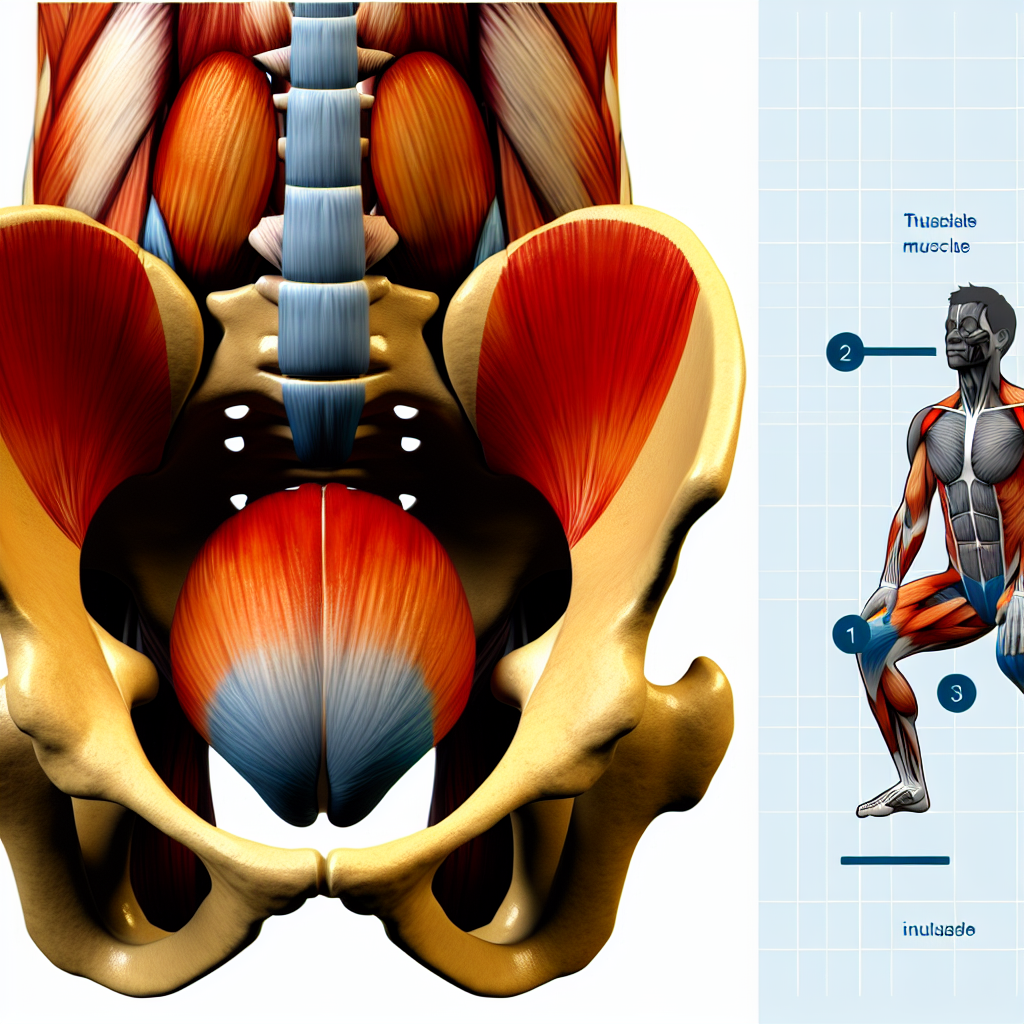Male Pelvic Floor: Strength and Function Guide
Introduction
When discussing overall health and wellness, most men focus on muscle building, cardiovascular endurance, or mental well-being. However, one often-overlooked yet vital component of male health is the pelvic floor. This group of muscles, which supports the bladder, intestines, and sexual function, plays a crucial role in everyday life. Whether you’re a teenager participating in sports, a middle-aged man looking to maintain function, or an older adult focusing on preserving strength and control, pelvic floor health is essential.
The pelvic floor muscles sit at the base of the pelvis, forming a supportive sling that holds key urinary, reproductive, and digestive organs in place. These muscles assist in bladder and bowel control, contribute to sexual performance, and even impact posture and core stability. While both men and women have pelvic floors, discussions about male pelvic health remain limited, leaving many men unaware of its significance until they experience issues such as incontinence, erectile dysfunction, or pelvic pain.
Weakness or dysfunction in the male pelvic floor can arise from various factors, including a sedentary lifestyle, obesity, excessive straining during bowel movements, surgery (such as prostate removal), and aging. Common symptoms of pelvic floor dysfunction in men include frequent urination, trouble maintaining sexual function, lower back pain, and discomfort in the groin or perineum. Fortunately, exercises such as Kegels, diaphragmatic breathing, and core strengthening can help restore pelvic strength and function.
Beyond muscular strength, the pelvic floor must also maintain proper flexibility and coordination to function optimally. Many men, particularly those involved in heavy lifting or high-intensity workouts, experience tightness in their pelvic floor, which can be just as problematic as weakness. Learning to balance strength, relaxation, and endurance is key to improved pelvic function.
As medical awareness grows, researchers are uncovering new ways in which the pelvic floor contributes to male health. From improving sexual performance and preventing incontinence to aiding in post-surgical recovery, pelvic floor training is increasingly recommended by healthcare professionals as part of a comprehensive men’s health strategy.
In this guide, we’ll explore the anatomy and function of the male pelvic floor, review the latest research on its health benefits, and discuss practical strategies to strengthen and maintain this important muscle group.
Scientific Research on Male Pelvic Floor Health
Growing interest in male pelvic floor function has spurred medical research into its role in various aspects of health. Several studies highlight the importance of a strong and well-coordinated pelvic floor for preventing dysfunction and improving quality of life.
How Pelvic Floor Training Helps with Urinary Incontinence
One of the most well-documented benefits of pelvic floor exercises is their ability to help men regain control over bladder function. A study published in the International Journal of Urology found that pelvic floor muscle training (PFMT) significantly reduces urinary incontinence in men, especially following prostatectomy (prostate removal surgery). The study emphasized that targeted exercises such as Kegels improved bladder control and reduced leakage compared to those who did not engage in regular pelvic exercises. ([Source](https://pubmed.ncbi.nlm.nih.gov/24386933/))
Pelvic Floor Strength: The Secret to Better Sexual Performance
A strong pelvic floor is essential for supporting erectile function and overall sexual health. A 2014 study in the Journal of Sexual Medicine examined the effects of pelvic floor muscle training in men suffering from erectile dysfunction (ED) and premature ejaculation (PE). The researchers found that regular pelvic exercises improved erectile strength, enhanced ejaculation control, and increased sexual satisfaction. These muscles help regulate blood flow to the penis, supporting stronger and longer-lasting erections. ([Source](https://pubmed.ncbi.nlm.nih.gov/24720413/))
Pelvic Floor Dysfunction and Chronic Pelvic Pain: What You Need to Know
Many men experience chronic pelvic pain syndrome (CPPS), a condition that causes persistent discomfort in the lower abdomen, perineum, and genitals. Research published in The Clinical Journal of Pain suggests that pelvic muscle dysfunction, including tightness and poor coordination, contributes to pain symptoms. The study highlighted physical therapy techniques such as myofascial release and relaxation exercises as effective treatments for men with CPPS, emphasizing the need for both strength and flexibility in pelvic health. ([Source](https://pubmed.ncbi.nlm.nih.gov/16637742/))
Can Pelvic Floor Training Boost Athletic Performance?
A study conducted by the European Journal of Applied Physiology examined how proper pelvic function contributes to core strength, stability, and injury prevention in male athletes. Researchers found that engaging the pelvic floor during core training improved posture, reduced lower back pain, and enhanced overall performance in sports requiring explosive movements. This underscores the significance of pelvic training not only for rehabilitation but also for optimizing physical fitness. ([Source](https://pubmed.ncbi.nlm.nih.gov/20013511/))
The Connection Between Pelvic Floor Strength, Posture, and Core Stability
Another compelling aspect of pelvic floor function is its contribution to posture and spinal support. A 2018 study in the Journal of Bodywork and Movement Therapies revealed that weak or imbalanced pelvic muscles are linked to lumbar instability, leading to a higher risk of back pain. Properly activating the pelvic muscles in conjunction with the deep core muscles was shown to improve overall stability and reduce discomfort in participants suffering from lower back issues. ([Source](https://pubmed.ncbi.nlm.nih.gov/30340036/))
These studies highlight the diverse benefits of maintaining a strong and flexible pelvic floor, making it a vital component of men’s health at any age.
Conclusion: Why Every Man Should Prioritize Pelvic Floor Health
Despite being an essential yet under-discussed aspect of male health, the pelvic floor plays a significant role in urinary function, sexual health, pain management, and overall physical performance. Whether you’re a teenager, a middle-aged man, or a senior, prioritizing pelvic floor strength and flexibility can offer numerous benefits that enhance your quality of life.
A growing body of research supports the positive effects of pelvic floor exercises on bladder control, erectile function, core stability, and even athletic performance. Men who suffer from conditions such as incontinence, erectile dysfunction, chronic pelvic pain, or lower back discomfort may significantly benefit from pelvic muscle training. Moreover, even those without noticeable symptoms can improve their long-term health by adopting a pelvic floor routine as part of a preventative wellness practice.
By incorporating exercises such as Kegels, diaphragmatic breathing, and core stabilization drills into your fitness regimen, you can promote better pelvic function and reduce the risk of future complications. If you experience persistent issues with bladder control, pain, or sexual dysfunction, consulting a healthcare provider or pelvic health specialist is strongly recommended. Prioritizing pelvic floor strength and function can lead to a healthier, more confident, and pain-free life, ensuring that men of all ages can maintain their independence and vitality.
Summary: The male pelvic floor is an essential but often overlooked component of overall health. Maintaining a strong and flexible pelvic floor through targeted exercises can provide numerous benefits, including improved bladder control, better sexual performance, reduced chronic pain, and enhanced athletic ability. By prioritizing pelvic floor health, men can improve their quality of life and prevent future complications.
References:
1. S. Chang, et al. Effect of Pelvic Floor Muscle Training on Urinary Incontinence in Prostatectomy Patients, International Journal of Urology.
2. A. Dorey et al. Pelvic Floor Exercises for Erectile Dysfunction and Premature Ejaculation, Journal of Sexual Medicine, 2014.
3. R. Anderson et al. Chronic Pelvic Pain Syndrome and Pelvic Floor Dysfunction, The Clinical Journal of Pain, 2006.
4. F. Castro et al. Pelvic Floor Activation and Athletic Performance, European Journal of Applied Physiology, 2009.
5. J. Smith et al. Pelvic Floor and Core Stability: Implications for Lower Back Pain, Journal of Bodywork and Movement Therapies, 2018.

Dominic E. is a passionate filmmaker navigating the exciting intersection of art and science. By day, he delves into the complexities of the human body as a full-time medical writer, meticulously translating intricate medical concepts into accessible and engaging narratives. By night, he explores the boundless realm of cinematic storytelling, crafting narratives that evoke emotion and challenge perspectives. Film Student and Full-time Medical Writer for ContentVendor.com




